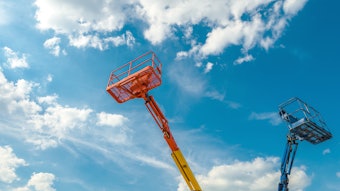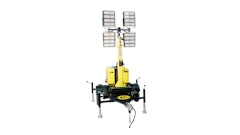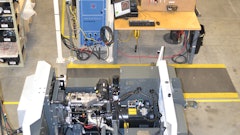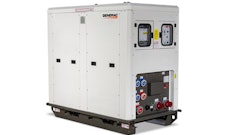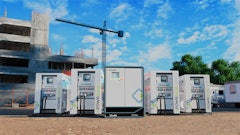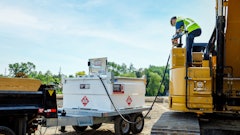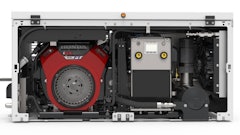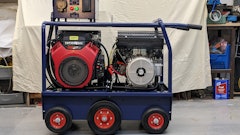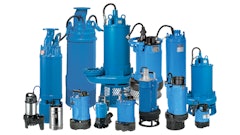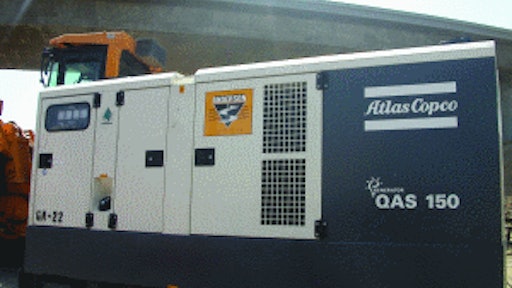
Generators and compressors seldom see revolutionary technological breakthroughs, but there are advancements being made to the machines that provide power on the jobsite.
According to Marc Leupi, product manager utility with Wacker Neuson Corp., the biggest changes are related to emissions standards for diesel engines. "EPA Tier III and interim Tier IV regulations took effect this year for many popular size engines, which meant that many OEMs have spent the past year scrambling to fit up the latest version engines," he explains. "I think it's fair to say that the Tier workload over the past few years has limited other development opportunities for most OEMs in the generator and compressor business."
He adds, "Wacker Neuson has found time to expand its line up to 240kVA and add some additional options like Extended Run Fuel tanks (ERT) and fluid containment systems which are now standard on many of our models. The ERT, although a 'low-tech' solution, does have a couple of 'green' advantages such as cutting by up to one third the number of refuelings needed during continuous operation. And since the tanks are fluid-contained, ground contamination potential is greatly reduced."
According to Chuck Westhofen, product manager for compressors and generators at Atlas Copco Construction Equipment LLC, today's machines are becoming smaller and more powerful. "We're adapting to customer requests for smaller footprints while maintaining or decreasing the size." He adds, "Customers are asking for cleaner air and cleaner power."
Fuel economy is a continuing concern for customers and manufacturers as well. "Most of our equipment has 500-hour service intervals to reduce the amount of used oil required," Westhofen says.
All of the above contribute to "greener" machines. A reduction in the amount of oil changes required by providing 500-hour service intervals, plus the use of 110-percent fluid containment frames to prevent any fluid spillage on site, go a long way toward creating machines that are kinder to the environment.
Westhofen notes, "ISO 14001 certification requires manufacturing to focus on recycling, hazardous materials and reducing materials."
What does it cost you?
Whether technological advancements increase the initial or lifetime cost of generators and compressors depends on your perspective.
"Engine manufacturers have invested large sums to keep current with the EPA standards and many of those costs have been passed on to the OEMs," says Leupi. "OEMs have, in turn, passed on some of these costs to dealers and end-users, depending on the size and make of the engine. ROI is obviously impacted with any increase in the acquisition cost, but also operational costs are affected as fuel consumption, paradoxically, has gone up for these 'greener engines"
For his part, Westhofen says generally, technological changes reduce the cost of the overall machine.
"Technology allows manufacturers to utilize electronics for functions that previously were mechanical," he says. "Today's electronically controlled systems should last longer than mechanically driven systems and provide higher ROI, including higher resale values. Manufacturers are still waiting to see the impact of Tier IV on engines both on engine size and costs."
Still, as technology advances, so, generally, do the associated costs.
"Engines have become more complex as items like common rail fuel injection systems, turbochargers, charge air coolers and engine control modules (digital controllers) become standard on most new engines," says Leupi. "The engines run hotter and therefore, present more of an engineering challenge for OEM designers."
Despite some of the challenges, technological changes have simplified service and maintenance in some ways. Service timers are electronically controlled and give the user instant reminders of when services are due to be performed. Atlas Copco compressors and generators, for example, have service times based on hours and days to remind customers when minor and major services are due. Westhofen says these reminders appear on the user-interface screen used to manage all unit functions. New technologies tend to be smaller than before, allowing more room inside the housings for access to important servicing points like filters and drains.
So what does the future hold for compressors and generators? The answer is environmental compliance in the form of cleaner-burning engines. "The engine manufacturers are still evolving their technology responses to the very tight exhaust emissions standards of Tier IV," says Leupi. "I think it's safe to say everyone will breathe easier (no pun intended) when Tier IV is behind us."



